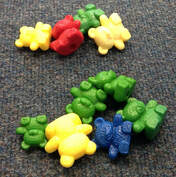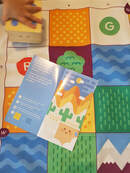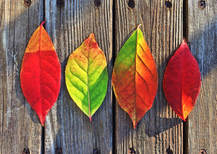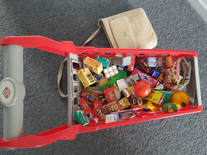Authentic Contexts
Where possible these skills, concepts and understandings should be taught in authentic contexts and indeed the first sentence for each of the progress outcomes starts with "In authentic contexts...".
What is an authentic context? The Galileo Network in their authenticity rubric state that authenticity is achieved when:
"The scope of the study emanates from a question, problem, issue or exploration that is significant to the discipline(s) and the community locally, provincially, nationally or globally; is meaningful and relevant to students; and is mapped to the mandated curriculum."
This webinar looks at what "In authentic contexts and taking account of end-users" means. Below are some examples of authentic contexts.
The new MoE Pūtātara site "supports schools and teachers to develop learning opportunities that are place-based, inquiry-led, and focused on participation for change." The UN Sustainability Development Goals and the TKI Sustainability resources page are also good places to start.
What is an authentic context? The Galileo Network in their authenticity rubric state that authenticity is achieved when:
"The scope of the study emanates from a question, problem, issue or exploration that is significant to the discipline(s) and the community locally, provincially, nationally or globally; is meaningful and relevant to students; and is mapped to the mandated curriculum."
This webinar looks at what "In authentic contexts and taking account of end-users" means. Below are some examples of authentic contexts.
The new MoE Pūtātara site "supports schools and teachers to develop learning opportunities that are place-based, inquiry-led, and focused on participation for change." The UN Sustainability Development Goals and the TKI Sustainability resources page are also good places to start.
|
Examples
The Enabling e-learning student-created apps page has many examples of apps created to solve an authentic problem. Some apps that can be used for this include: Metaverse - this one is relatively easy to make a basic app using a pick-a-path type approach but has scope for advanced coding. Free. You can create a simple app using Google Slides in a similar manner to pick-a-path stories. Swift - create ios apps. the Swift Playgrounds app has free game-based tutorials. Mobincube - has a free plan and teachers can upgrade their plan for free by emailing them. Global Micro:bit challenge For Computational Thinking, Progress Outcome One the contexts are non-computerised (also known as Unplugged). For Progress Outcome Two the contexts will be both computerised and non-computerised. Above that the contexts to achieve the outcome need to be computerised but non-computerised contexts could be used to help students understand the concepts first. Creating a Game Concept inspired by Oat the Goat and Never Alone - years 9 & 10 but could be done with younger learners. Literacy
Social SciencesCoding and Social Justice Issues - This was literacy task within a social justice context with students sharing their findings via Scratch linked to a Makey Makey controller.
Supporting Sustainable Outcomes - Students in Year 9 at Rolleston College work through a design thinking (inquiry) process to design and develop a digital outcome to create awareness around a sustainable development Error parity detection magic trick video (above) - error parity detection is used to detect errors in programs e.g.if a barcode is damaged. Demonstrate using this little "magic" trick. See if students can work out how you did it.
|
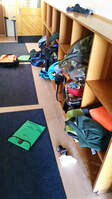
Algorithms for Class Routines
This idea from Alison Stewart and Sharon Alabaster: "We have adapted this to create class codes for our soft systems e.g. lining up and walking to the hall, putting lunch boxes away, getting changed for swimming and so on. After a while, the children know exactly what to do when you say, “Let’s run the getting changed for swimming code.”" I can see this being used as part of an inquiry process e.g. How can we keep our cloakbay tidy? Once we have done some research and found some useful ideas we could design an algorithm that will help us . Science
There are many opportunities to write and follow instructions (algorithms) in science. In the Planting a Seed video students cut and paste steps from a worksheet but they could write and follow their own instructions (algorithms). They could compare their algorithm with those of other students to gain understanding of how there can be more than one algorithm for the same task.
Phys. Ed. & Dance
Another idea from Alison and Sharon: "Our year 2 students last year wrote ‘swim bot’ codes prior to going to the pool. Things such as, eyes look at the bottom of the pool, long legs with floppy feet, etc etc. It really helped them with their swimming skills and focus & motivation. Many action songs can be written as algorithms and provide opportunities for de-bugging. Music
Create music electronically. D.D.D.O P.O. 1 Exemplar 3: Animating a Song D.D.D.O. P.O. 1 Exemplar 4 Bottle-cap Music  Flowchart for rubbish sorting Flowchart for rubbish sorting
Flowcharts
Students can design flowcharts for tasks that need to be completed. Discuss how they can make the process the most efficient with the least amount of steps. The Flowcharts page has some additional ideas. STEM |
2019
We are happy, and indeed encourage you to share content from this site with other educators. Please acknowledge the source and use only for non-commercial, educational purposes. Any photos of children may not be used without our express permission.
We are happy, and indeed encourage you to share content from this site with other educators. Please acknowledge the source and use only for non-commercial, educational purposes. Any photos of children may not be used without our express permission.
